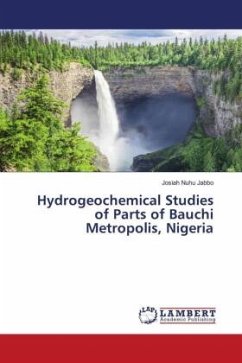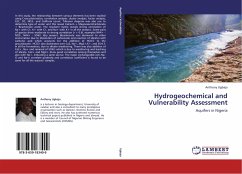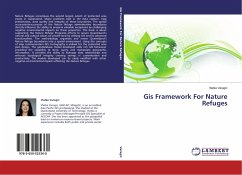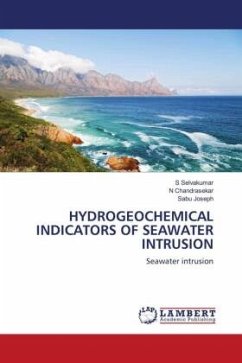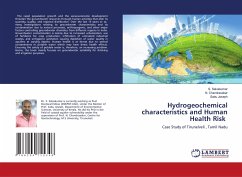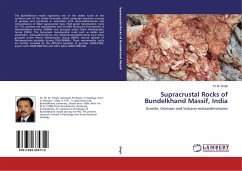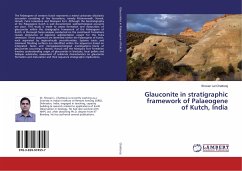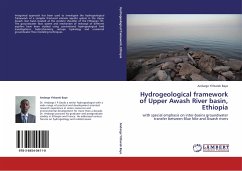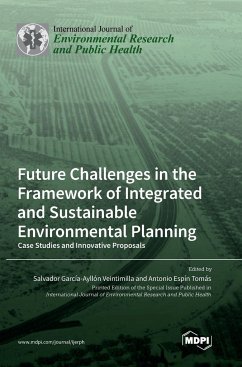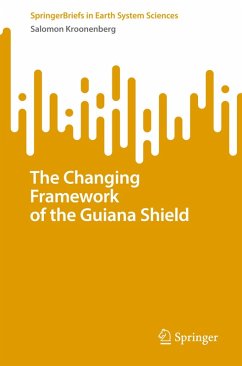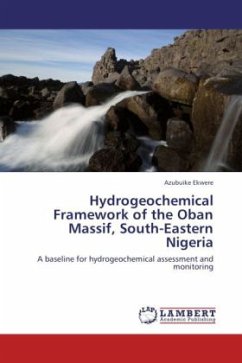
Hydrogeochemical Framework of the Oban Massif, South-Eastern Nigeria
A baseline for hydrogeochemical assessment and monitoring
Versandkostenfrei!
Versandfertig in 6-10 Tagen
45,99 €
inkl. MwSt.

PAYBACK Punkte
23 °P sammeln!
Hydrogeochemical study of the fractured/weathered basement of the Oban massif, south-eastern Nigeria has been carried out. Results indicate that concentrations of major cations and anions exhibit the order of abundance; CaNaMgK and HCO3SO4Cl respectively, with minor variations across sampling seasons. Ca-Na-Cl-SO4 and Ca-Mg-HCO3 water types have been identified as major facies, resultant from congruent influences of weathering (mainly silicates), ion exchange processes and water mixing. The computer modeling program, PHREEQC was used to ascertain the distribution, chemical speciation and miner...
Hydrogeochemical study of the fractured/weathered basement of the Oban massif, south-eastern Nigeria has been carried out. Results indicate that concentrations of major cations and anions exhibit the order of abundance; CaNaMgK and HCO3SO4Cl respectively, with minor variations across sampling seasons. Ca-Na-Cl-SO4 and Ca-Mg-HCO3 water types have been identified as major facies, resultant from congruent influences of weathering (mainly silicates), ion exchange processes and water mixing. The computer modeling program, PHREEQC was used to ascertain the distribution, chemical speciation and mineral saturation indices of the waters with an interest in potentially toxic elements. Results reveals Fe, Mn, Ni, Pb, Cd and Cr are distributed as free ions. Oxides and hydroxides of iron and manganese are predominant, reflective of mineralogy/geology of the crystalline basement. The groundwater is super-saturated (SI10), with respect to goethite, hematite, ferrihydrite, jarosite-k, hausmanite, manganite, pyrochroite and pyrolusite. These species are relatively mobile under the prevailing pH-Eh regime, but total concentrations are low and within permissible limits for safe water.



